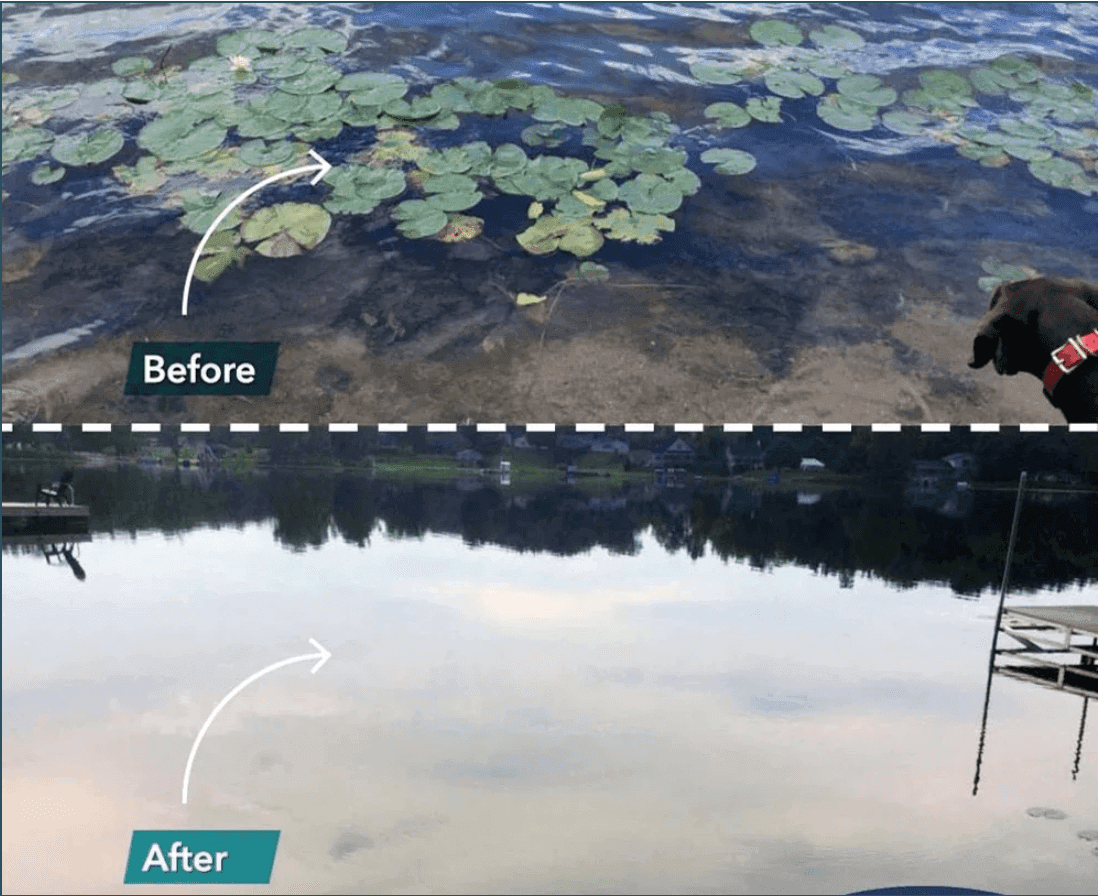Muck & Lake Weed Control - Green & Guaranteed!
Free shipping in USA (lower 48 states), Canada (almost free) & EU
Muck & Lake Weed Control - Green & Guaranteed!
Free shipping in USA (lower 48 states), Canada (almost free) & EU
There are a lot of tough lake weeds. For me, I think lily pads are the worst. Once they get started, good luck trying to get rid of them. Lilies spread by their root system under the soil, so for every one you see on the surface there can be a dozen or more ready to pop up.
As a test last fall, (partly at my wife's urging, she thinks they're pretty) I left three lilies grow. This year there were 30 came up in that same spot! That could mean 300 next year. Yikes! Not on my beach.
They're tenacious plants. To make matters worse, some states list them as a protected, even though lilies (the white ones) are an invasive species from Asia.
Even their scientific name is ugly: Nymphaeaceae. What's with all those vowels? Nasty plants... Even herbicide applications is hit or miss.
There is hope, however. It will take awhile, but you can get rid of lily pads, at least in front of your own place.
Pictured above is a patch of white lilies that started from just two plants, two years ago. The owners had kept the beach clean, but they moved and this is what happened. Some friends of mine bought the place, giving me the opportunity to dispatch the evil lilies.
The second picture shows the same spot after a LakeMat Pro is placed on them, depriving the plants of sunlight. As you can see, visually, the change is immediate: No more lily pads.
Now, lilies are tough and resilient. I covered a patch for eight weeks will a LakeMat Pro. When I removed the Mat, all the other lake weeds were gone, completely decayed, but the remnants of the lilies were still visible. They were dead, but the plant matter was still there.
So, to get rid of your lily pads, I suggest placing a LakeMat Pro over them in the fall, winter (if you can) or early spring and either leave the Mat there permanently, or leave it there for 10 weeks before moving it.
LakeMat Pros are the most effective, greenest, easiest way to control your lily pads. They're guaranteed to work every time. But you'll need to be a little patient.
